I did some extra baking a few weeks ago when my sons were in town. I already posted about the Braided Pumpkin Brioche and Rolls, but the month got away from me before I could get the other bread posted. I started writing about this Overnight Country Brown Bread in mid-October, but I’m just now getting around to finishing it. I think it’s worth the wait.
I made enough dough for two loaves so I decided to do a comparison and bake one loaf in a cloche and the other loaf in a Dutch oven. The Cloche is ceramic stoneware and the Dutch oven is cast iron so it wasn’t an exact comparison, but it was an interesting experiment nonetheless.
I had just fed my rye starter so I used some of it in the levain instead of using my apple starter, which is made with white bread flour. I also utilized a different method for feeding and incorporating the levain than the one Ken Forkish outlines in the book.
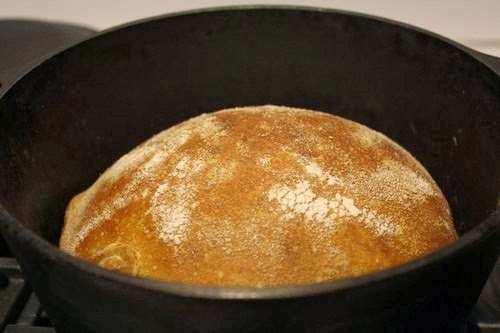
Overnight Country Brown Bread
Adapted from: Flour Water Salt Yeast: The Fundamentals of Artisan Bread and Pizza by Ken Forkish
Makes: Two Loaves
Levain:
| Ingredient | Quantity |
| White bread flour | 100 g |
| Water | 100 g, 85-95 degrees F. |
| Rye starter, active | 1 tablespoon |
Final Dough:
| Ingredient | Final Dough Mix Quantity |
| White bread flour | 604 g |
| Whole wheat flour | 276 g |
| Water | 684 g, 90-95 degrees F. |
| Fine sea salt | 22 g |
| Levain | 200 g |
Process:
1) Prepare the Levain:
Prepare the levain the night before you plan to bake the bread, and after your most recent feeding of your starter. Break up the starter in the warm water and mix in the flour. Mix by hand or with a wooden spoon until it is thoroughly blended. Cover the bowl with plastic wrap and let it rest at room temperature (65 to 70 degrees F.) for 7 to 9 hours before mixing the final dough.
2) Autolyse:
After the levain has rested for 7 to 9 hours (or overnight), mix the bread flour and the whole wheat flour in a large bowl or tub and add the warm water. Mix using your hands, or a Danish dough whisk, just until there are no dry bits of flour. Cover the bowl and let the dough rest for 20 to 30 minutes.
3) Mix the final dough:
Sprinkle the 22 grams of salt evenly over the top of the dough. Transfer the levain to the bowl and mix by hand, using wet hands so the dough doesn’t stick to you.
Grab the dough between your thumb and fingers to stretch it up. Fold it several times to incorporate all of the ingredients. Refer to my post on making Tartine Country Bread to learn the folding method. The dough should be around 77 – 78 degrees F. at the end of the mix.
4) Overnight Fermentation
This dough needs to ferment for 12 –15 hours. During that time, it give it three or four folds. You can do the folds before you go to bed, then let it ferment at room temperature overnight. Fold the dough two or three times during the first hour and the final fold before you retire for the evening.
Once the dough is nearly tripled in size, about 12-15 hours after mixing, proceed to dividing and shaping.
5) Dividing the Dough
Gently remove the dough to a floured work surface. Pick it back up using floured hands and form it into a somewhat uniform shape. Dust the top of the dough with flour and then cut it into 2 equal pieces using a sharp knife or a bench knife.
6) Shaping the Loaves
Dust 2 banneton baskets (proofing baskets) with a combination of all-purpose/white rice flour. I used my lined baskets for this bread, but you can use unlined baskets as well if you want the decorative floured rings to appear on the loaves.
Shape the loaves into tight rounds and place them seam-side up in the proofing baskets.
7) Proofing the Loaves
Cover the baskets with a kitchen towel or plastic wrap (or both) and let them proof for about 4 hours, at room temperature of 70 degrees F. Perform the finger-dent test to determine when they are proofed sufficiently. When you press a finger into the dough, the imprint will remain when it is ready to be baked.
8) Preparing the Oven for Baking
The Dutch oven had to be preheated but the cloche didn’t so I started the baking process with the Dutch oven.
At least 45 minutes prior to baking the loaf, place the Dutch oven (with the lid on) on the lowest rack of the oven. Preheat the oven to 475 degrees F.
If you are only baking one loaf at a time, like I did, place the 2nd loaf in the refrigerator while the 1st loaf is baking. Let the Dutch oven reheat for about 5 minutes before baking the 2nd loaf.
9) Baking the loaf in a Dutch Oven
During this process, please be careful not to touch the Dutch oven with your hands, fingers or forearms. The preheated pot will be very hot.
Remove the preheated Dutch oven from the conventional oven using heavy oven mitts. Carefully invert the loaf, seam-side down into the Dutch oven. Remember, the top of the loaf was the side that was facing down in the proofing basket.
Cover the pot with the lid and return it to the oven. Bake the loaf for 30 minutes with the lid on, then remove the lid and bake for an additional 20 to 25 minutes, until the crust is medium dark brown.
While the 1st loaf is baking, remove the 2nd loaf from the refrigerator.
Remove the Dutch oven from the conventional oven using heavy oven mitts and tilt the pot to turn the bread out onto a wire rack to cool. Let the loaf cool for 20 minutes before slicing and eating.
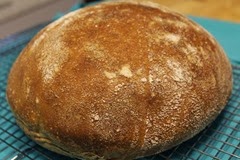 |
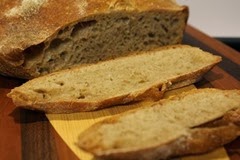 |
10) Baking the Loaf in a Cloche
This is the first bread I’ve baked in my new Emile Henry Bread Cloche.
The cloche didn’t need to be preheated. I just sprinkled the bottom of the cloche lightly with cornmeal. However, that turned out to be a mistake so next time, I’ll cover it liberally with corn flour. I learned the corn flour tip from the Baking By Hand book.
Carefully invert the loaf from the proofing basket onto the base of the cloche. It should be seam-side down now.
Score the loaf in the pattern of your choice using a serrated knife or bread scoring lame. I chose the tic-tac-toe pattern because I like the way the scores open up during baking.
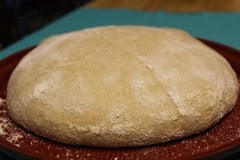 |
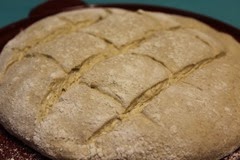 |
Put the lid on the cloche and carefully place it on the bottom rack of the preheated oven. Turn the oven down to 450 degrees F. Bake the loaf for 30 minutes with the lid on, then remove the lid and bake for an additional 15 to 20 minutes, until the loaf is a beautiful medium brown color.
I think my 2nd loaf was a bit over proofed because it stuck to one side of the cloche (see photo below) and the bottom. When I removed it from the base of the cloche to let it cool on the wire rack, the bottom stayed in the pan. Yikes!
11) Cooling and Slicing (or tearing) the Loaf
I need some more practice using this cloche because as I mentioned previously, I didn’t sprinkle enough flour on the bottom. I used corn flour for the Cornmeal Pumpkin Hearth Loaf (which I made after this loaf) so I’m going to try that next time.
As you’ll notice, the loaf doesn’t have a bottom in these photos because it’s still in the pan. That didn’t stop us from enjoying it. We just pulled the loaf apart and savored it that way. My oldest son really liked it so I sent the rest home with him.
We enjoyed both of these loaves. Both baking methods produced excellent flavor and texture. The loaf baked in the cloche was a prettier loaf due to the scoring, except the part about the missing bottom.
I really thought the loaf in the Dutch oven would crack on top since I hadn’t scored it, but it didn’t. It was a lovely round loaf and was equally as chewy and tasty as the loaf baked in the cloche.
I think for presentation purposes (and the fact that you don’t have to preheat the cloche, and it’s not as heavy as my cast iron Dutch oven), I prefer the cloche, but it’s fun to bake in both of them. I don’t have a ceramic Dutch oven so that probably makes a difference.
The best part of this experiment, besides enjoying the bread, is that I was actually able to lift the cast iron pot without wincing in pain. This means my tennis elbow is getting better. Yea!
Happy Baking!
Cathy
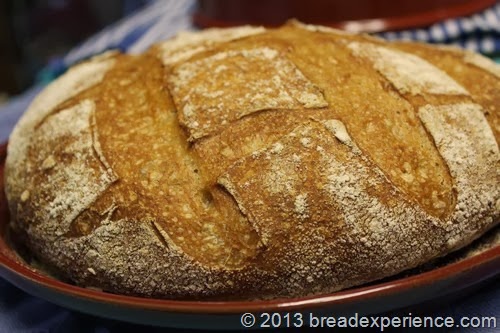
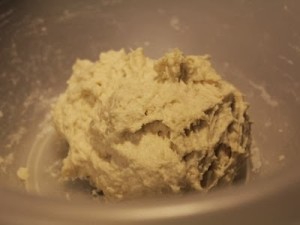
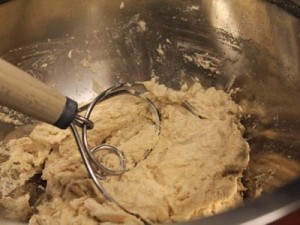
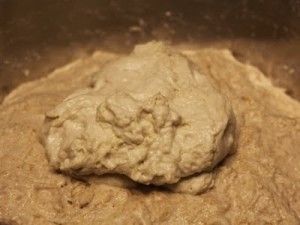
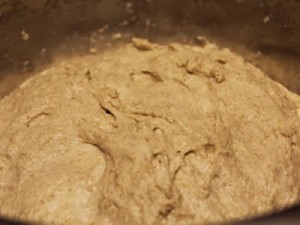
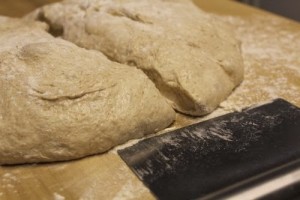

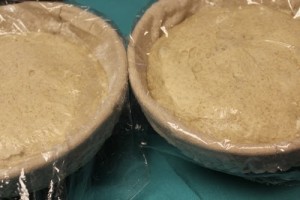
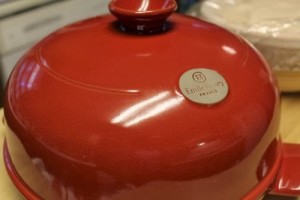

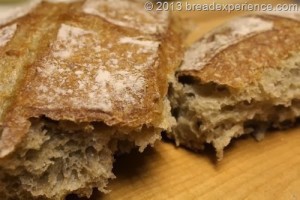
Leave a Reply